Customer Experience Insights Through Segmentation and Analytics

Unlocking the potential of customer segmentation and analytics can redefine how you deliver exceptional customer experiences. By understanding your audience better, you can tailor every interaction to their unique needs. Companies that embrace these strategies see remarkable results. For instance, businesses with advanced analytics capabilities make decisions five times faster than their peers and achieve twice the financial performance. Personalized campaigns, powered by customer experience insights, also generate 58% of all revenue, with an impressive 4200% ROI. Tools like Sobot's innovative solutions make it easier to harness these benefits, enabling you to create meaningful connections and drive growth.
Understanding Customer Segmentation and Analytics
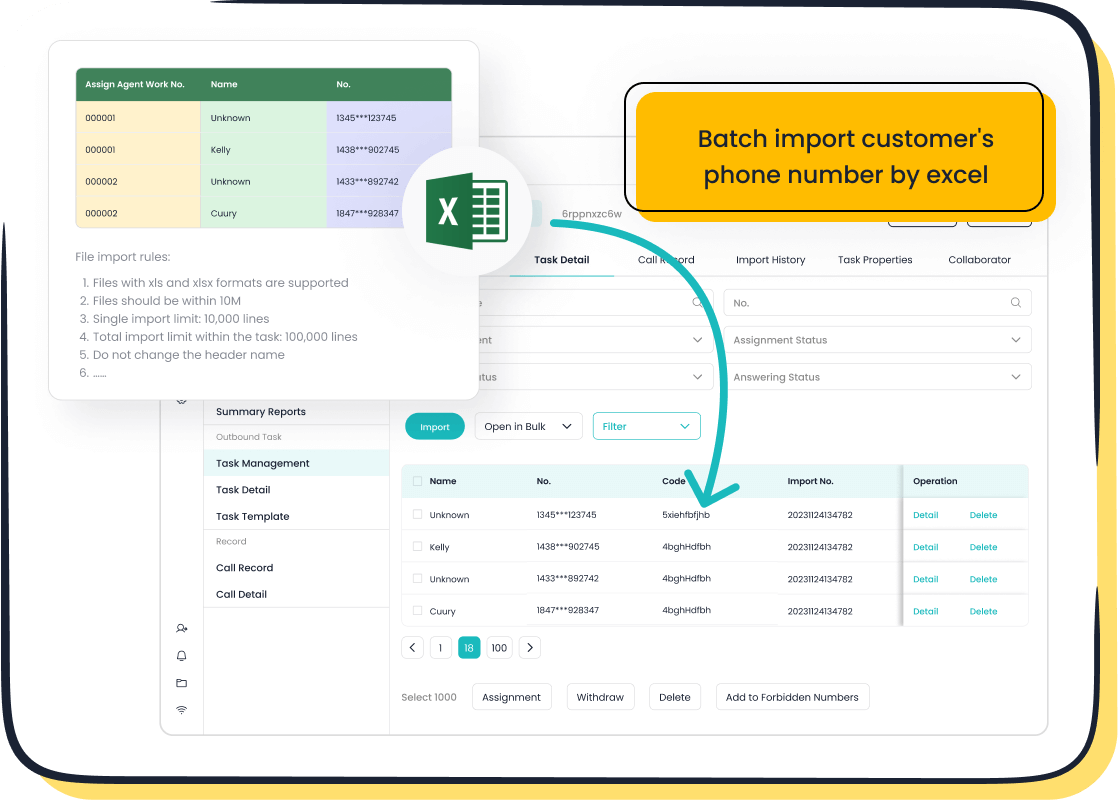
What Is Customer Segmentation?
Customer segmentation divides your audience into smaller, more manageable groups based on shared characteristics. These groups can include demographics, purchasing behavior, or even relational orientations. By segmenting customers, you can better understand their needs and preferences, allowing you to create tailored experiences that resonate with them. For example, active customers often show higher satisfaction levels compared to passive ones, which suggests different approaches for engagement.
Segmentation methods vary widely. Some rely on empirical analysis, which identifies segments based on data structure, while others use a priori analysis, which applies predetermined criteria. Advanced techniques like clustering algorithms and machine learning further refine segmentation by analyzing vast amounts of data. These methods help businesses uncover actionable customer insights, enabling them to focus on the most valuable segments of their target audience.
| Method | Description |
|---|---|
| Clustering Algorithms | Groups customers based on similarities in data, such as demographics. |
| Conjoint Analysis | Derives preferences through realistic decision-making scenarios. |
| Machine Learning | Predicts customer behavior using historical data for segmentation. |
The Basics of Customer Analytics
Customer analytics involves collecting and analyzing data to understand customer behavior, preferences, and interactions. It helps you answer critical questions like "What do customers want?" and "How can we improve their experience?" By leveraging analytics, you can make informed decisions that drive growth and satisfaction.
There are three main types of customer analytics:
- Predictive Analytics: Forecasts future behavior, such as identifying at-risk customers and offering incentives to retain them.
- Descriptive Analytics: Provides insights into overall customer happiness by analyzing satisfaction feedback.
- Real-World Applications: Uses historical data trends to improve outcomes, like automating reminders for follow-up appointments.
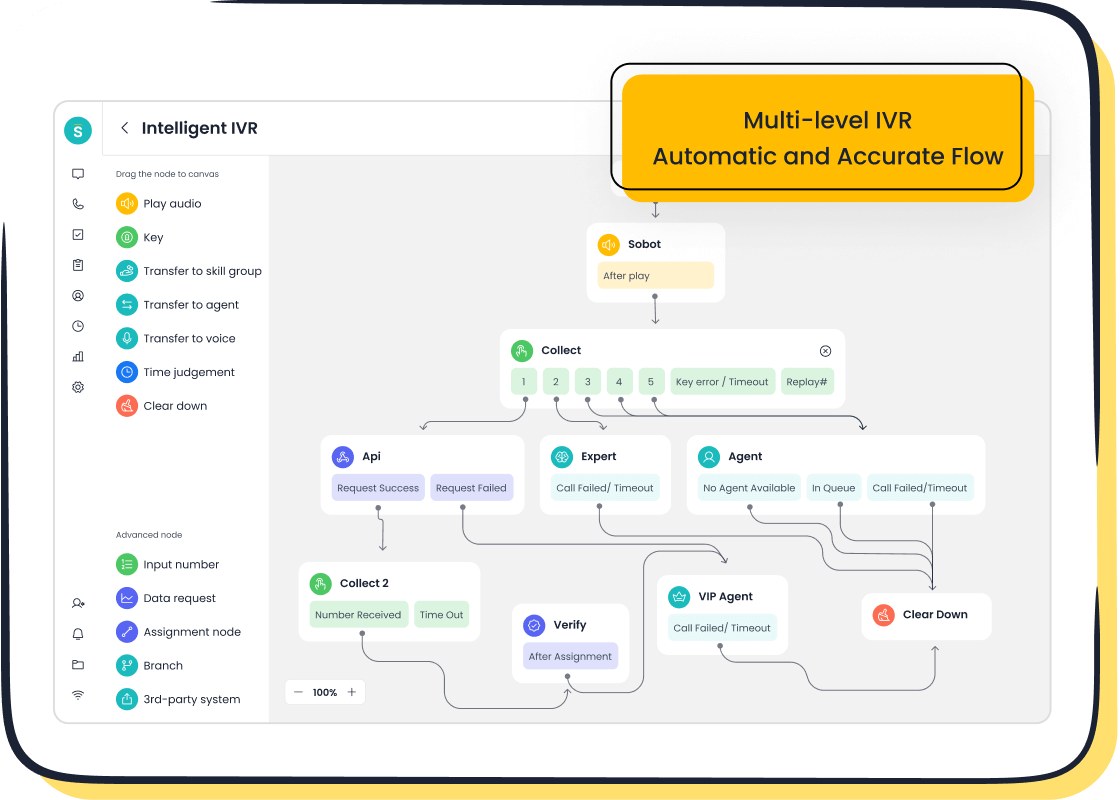
For instance, predictive analytics can help you identify customers likely to churn and offer them personalized solutions. Descriptive analytics, on the other hand, enables you to measure engagement and refine your strategies. Tools like Sobot's Voice/Call Center simplify this process by providing real-time monitoring and analysis of customer interactions, ensuring you stay ahead of their needs.
How Segmentation and Analytics Enhance Customer Experience Insights
Combining segmentation and analytics unlocks deeper customer experience insights. Segmentation helps you identify distinct groups within your audience, while analytics provides the data needed to understand their behavior and preferences. Together, they enable you to deliver personalized experiences that improve satisfaction and loyalty.
For example, tools like Qualtrics and Mixpanel measure engagement across channels, while platforms like Heap automate the collection of customer interactions. These insights allow you to refine your strategies and enhance the customer journey. Sobot's solutions, such as its AI-powered Voicebot, take this a step further by recognizing customer intent and providing intelligent interactions.
| Tool | Contribution to Customer Experience Improvement |
|---|---|
| Qualtrics | Measures engagement and gathers cross-channel customer signals. |
| Mixpanel | Analyzes user interactions on websites and apps with precision. |
| Heap | Automates the collection of digital interactions, reducing tracking errors. |
| Userpilot | Provides insights into product experiences, measuring engagement and feature adoption. |
| Zendesk | Supplies actionable insights for omnichannel support, monitoring response times. |
By leveraging segmentation and analytics, you can identify opportunities to enhance customer satisfaction and retention. For instance, businesses that use these strategies often see measurable improvements, such as higher repurchase rates and increased positive feedback. Sobot's omnichannel solutions further streamline this process by integrating customer data across platforms, ensuring seamless and efficient service delivery.
Benefits of Customer Segmentation and Analytics
Personalizing Customer Interactions
Customer segmentation allows you to tailor your interactions to meet specific customer preferences. By dividing your audience into distinct groups, you can create personalized marketing campaigns that resonate with their unique needs. For example, a fashion retailer using Adobe Analytics achieved a 29% revenue growth by delivering targeted communication. This approach also improved their email click-through rates by 35% and boosted return on ad spend (ROAS) by 41%.
| Example | Revenue Growth Percentage | Additional Insights |
|---|---|---|
| Fashion Retailer (Adobe Analytics) | 29% | 35% higher email click-through rates, 41% improvement in ROAS |
| Grocery Chain (Salesforce 360) | 22% | 31% increase in loyalty program participation, 26% higher mobile app engagement |
| Direct-to-Consumer Brand (Klaviyo) | Scaled from $5M to $30M | 19% better customer retention rates, 24% higher customer lifetime value, 33% reduction in acquisition costs |

Sobot’s Voice/Call Center enhances personalization by providing a unified workspace for agents. This feature consolidates customer data, enabling agents to deliver targeted communication and improve conversion rates. With tools like AI-powered Voicebots, you can also recognize customer intent and respond intelligently, ensuring a seamless customer experience.
Improving Decision-Making with Data-Driven Insights
Analytics empowers you to make informed decisions by providing actionable insights. Businesses using data-driven decision making are 178% more likely to outperform their peers. They also experience a 16% reduction in stockouts and a 15-20% improvement in operational efficiency. Companies like JPMorgan Chase have saved 360,000 hours annually by implementing machine learning systems, while Cleveland Clinic reduced readmission rates by 21% using predictive analytics.
- High performers using analytics are 2.5 times more likely to succeed.
- Predictive maintenance reduces downtime by 30-50%.
- Businesses see a 5.3x higher likelihood of launching successful products.
Sobot’s analytics tools, such as real-time call monitoring and data tracking, simplify this process. These features help you identify trends, optimize marketing effectiveness, and improve conversion rates. By leveraging these insights, you can refine strategies and achieve measurable results.
Building Long-Term Customer Loyalty
Segmentation strategies play a crucial role in fostering loyalty. By identifying valuable customer segments, you can focus on improving metrics like customer lifetime value (CLV) and repeat purchase rates. For instance, businesses that prioritize targeted communication often see higher Net Promoter Scores (NPS), indicating increased satisfaction and loyalty.
| Metric | Description |
|---|---|
| Customer Lifetime Value (CLV) | Measures the total value a customer brings over their lifecycle, helping identify valuable segments. |
| Churn Rate | Indicates the percentage of customers who stop doing business, highlighting areas for retention improvement. |
| Repeat Purchase Rate | Shows the percentage of customers making multiple purchases, identifying effective retention segments. |
| Net Promoter Score (NPS) | Assesses customer likelihood to recommend, revealing satisfaction levels and areas for loyalty enhancement. |
Sobot’s omnichannel solutions integrate customer data across platforms, ensuring consistent and personalized interactions. This approach not only enhances customer experience insights but also strengthens loyalty by addressing individual needs effectively. Businesses using these tools often report higher retention rates and long-term growth.
Practical Steps to Implement Customer Segmentation and Analytics
Collecting and Organizing Customer Data
The foundation of any successful customer segmentation strategy lies in collecting and organizing accurate data. To start, identify the types of data you need. This can include structured data like purchase history, semi-structured data such as email interactions, or unstructured data like social media comments. Determine the format of this data—whether it’s in JSON, XML, or CSV—and assess the volume required for meaningful analysis. Always define the purpose of your data collection, such as improving customer analytics or forecasting trends.
Tip: Use automation tools to streamline data collection and reduce errors. For example, Sobot's Voice/Call Center offers real-time call tracking and data monitoring, ensuring you capture accurate customer insights efficiently.
Maintaining data quality is equally important. Regularly update your database to ensure relevance and accuracy. Before implementing your methods, conduct tests to verify their effectiveness. Additionally, compliance with data privacy laws like GDPR or HIPAA is non-negotiable. These steps not only enhance your customer segmentation analysis but also build trust with your audience.
Identifying Key Segmentation Criteria
Once your data is organized, the next step is identifying the criteria for segmentation. Effective segmentation relies on measurable, accessible, and actionable criteria. For instance, demographic factors like age, income, and education level provide clear data points. Behavioral characteristics, such as purchasing habits or product usage, offer deeper insights into customer preferences. Geographic segmentation helps you tailor strategies to regional needs, while psychographic factors like lifestyle and values reveal motivations behind customer behavior.
| Criteria | Description |
|---|---|
| Measurable | Segments must be defined in terms of size and characteristics, allowing for quantifiable analysis. |
| Accessible | Businesses should be able to reach and serve the identified segments effectively. |
| Substantial | Segments need to be large enough to justify the investment of resources. |
| Actionable | Strategies must be developed to meet the specific needs of each segment. |
| Distinct | Each segment should have unique preferences or needs that warrant targeted marketing. |
For example, a grocery chain using segmentation increased loyalty program participation by 31% by focusing on behavioral data. Similarly, Sobot's omnichannel solutions integrate customer data across platforms, enabling you to identify and target distinct segments effectively.
Applying Analytics Techniques for Better Customer Insights
Analytics techniques transform raw data into actionable insights. Predictive analytics, for instance, forecasts future trends by analyzing historical data. Cognitive analytics uses deep learning algorithms to identify patterns, while automated insights extraction reduces the time spent on manual analysis. These methods help you understand customer behavior and optimize their experiences.
Tracking customer behavior data is another powerful approach. For example, monitoring call data through Sobot's Voice/Call Center can reveal patterns in customer interactions. This allows you to refine your strategies and address pain points. Encouraging customer feedback also adds qualitative depth to your analysis. For instance, businesses that identified frustration with long hold times implemented intelligent call routing, significantly improving satisfaction.
By leveraging these techniques, you can gain a comprehensive understanding of your audience. This not only enhances your customer segmentation analysis but also ensures your strategies align with customer preferences, driving long-term loyalty.
Testing and Refining Segmentation Strategies
Testing and refining your customer segmentation strategies is essential to ensure their effectiveness. A well-tested strategy helps you identify what works and what doesn’t, allowing you to make data-driven improvements. By continuously refining your approach, you can better meet customer needs and enhance their overall experience.
Key Testing Methodologies
To refine your customer segmentation, you need to adopt robust testing methodologies. These methods help you evaluate the performance of your segmentation efforts and identify areas for improvement. Here are some effective approaches:
- A/B Testing: Compare two versions of a campaign or strategy to see which performs better. For example, test different messaging styles for two customer segments to determine which resonates more.
- Independent-Samples T-Tests: Use statistical analysis to evaluate differences between segments. This method helps you identify whether your segmentation criteria effectively distinguish customer groups.
- Performance Metrics: Define clear success metrics, such as conversion rates or customer retention, to measure the impact of your segmentation efforts.
For instance, a multinational bank used T-tests to refine its wealth management segmentation. They discovered that income-based segmentation missed key behavioral differences. By analyzing transaction frequency and channel preferences, they improved their segmentation strategy, leading to a 28% increase in customer retention.
Steps to Refine Your Strategy
Refining your customer segmentation strategy involves a systematic approach. Follow these steps to ensure your strategy remains effective:
- Define clear segmentation criteria based on measurable and actionable factors.
- Establish hypotheses about how each segment will respond to your strategies.
- Collect performance data specific to each segment, such as engagement rates or purchase behavior.
- Analyze the data using statistical tools like T-tests to identify patterns and differences.
- Adjust your segmentation boundaries based on the insights gained.

For example, if you notice that younger customers prefer digital channels while older customers favor phone support, you can refine your strategy to allocate resources accordingly. Tools like Sobot’s Voice/Call Center simplify this process by providing real-time data tracking and analysis, helping you make informed adjustments.
Continuous Improvement Through Feedback
Customer feedback plays a vital role in refining your segmentation strategy. Encourage customers to share their experiences through surveys or direct interactions. Analyze this feedback to identify pain points and opportunities for improvement.
For example, if customers express frustration with long wait times, you can implement solutions like Sobot’s AI-powered Voicebot. This tool reduces wait times by handling repetitive queries, allowing agents to focus on complex issues. By addressing customer concerns, you can enhance satisfaction and loyalty.
Benefits of Refinement
Refining your segmentation strategy ensures that your efforts remain aligned with customer needs. Businesses that regularly test and adjust their strategies often see significant improvements in key metrics, such as:
| Metric | Improvement |
|---|---|
| Customer Retention | Increased by 28% in a case study involving behavioral segmentation. |
| Conversion Rates | Higher rates achieved through targeted messaging and personalized offers. |
| Customer Satisfaction | Enhanced by addressing specific segment needs and preferences. |
By leveraging tools like Sobot’s omnichannel solutions, you can integrate customer data across platforms, making it easier to test and refine your strategies. This approach not only improves your segmentation efforts but also drives long-term growth.
Tip: Regularly revisit your segmentation criteria to ensure they remain relevant. Customer preferences and behaviors evolve over time, so staying adaptable is key to maintaining an effective strategy.
Tools and Technologies for Customer Segmentation and Analytics
Leveraging Sobot's Voice/Call Center for Customer Analytics
Sobot's Voice/Call Center stands out as a powerful tool for customer analytics. It provides businesses with real-time call tracking, intelligent IVR, and AI-powered Voicebots. These features help you analyze customer interactions and identify patterns in behavior. For example, the system's smart call routing ensures that customers are directed to the right agent, reducing wait times and improving satisfaction.
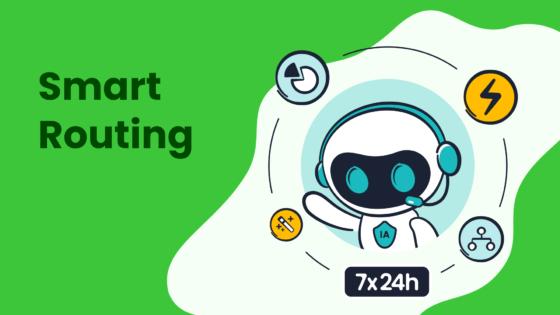
The platform also offers a unified workspace where agents can access customer data during calls. This integration allows you to personalize interactions and address customer needs more effectively. Additionally, the AI-powered Voicebot recognizes customer intent, enabling faster resolutions for common queries. With a 99.99% system uptime and global number availability, Sobot ensures reliable and scalable solutions for businesses of all sizes. By leveraging these capabilities, you can enhance your customer analytics efforts and deliver exceptional experiences.
CRM and Data Analytics Platforms
Customer Relationship Management (CRM) platforms combined with data analytics tools provide a robust foundation for segmentation. Platforms like Salesforce and HubSpot integrate customer data across channels, offering a comprehensive view of interactions. These tools allow you to track metrics such as customer lifetime value and churn rates, helping you refine your strategies.
For businesses seeking cost-effective options, Google Analytics offers free tools for basic segmentation. It provides insights into website traffic and user behavior, making it ideal for small businesses. On the other hand, advanced platforms like CleverTap combine CRM functionalities with strong analytics capabilities, enabling you to create highly targeted campaigns.
| Tool | Best For | Pros | Cons |
|---|---|---|---|
| CleverTap | Businesses needing an all-in-one platform | Comprehensive CRM integration, strong analytics | Higher price point for premium features |
| Google Analytics | Basic segmentation needs for websites | Free, accessible, highly customizable | Limited to web analytics |
| Mailchimp | Small to medium businesses focused on email | Affordable, user-friendly, multiple options | Primarily focused on email, limited areas |
These platforms simplify customer analytics by consolidating data and providing actionable insights. Whether you're a small business or a large enterprise, choosing the right tool can significantly improve your segmentation strategies.
AI and Machine Learning Tools for Advanced Insights
AI and machine learning tools have revolutionized customer analytics by automating data processing and uncovering hidden patterns. Predictive analytics, powered by machine learning, helps you forecast customer behavior and identify at-risk segments. For instance, tools like Segment enable real-time data segmentation, allowing you to respond quickly to changing customer needs.
Cognitive analytics takes this a step further by analyzing unstructured data, such as social media comments, to understand customer sentiment. Sobot's AI-powered Voicebot exemplifies this capability by recognizing intent and providing intelligent responses. This not only improves efficiency but also enhances the overall customer experience.
| Tool | Best For | Pros | Cons |
|---|---|---|---|
| Segment | Businesses enhancing communication | Easy integration, real-time data segmentation | Expensive add-ons |
| Heap | SaaS companies needing detailed data | Comprehensive data capture, rich insights | Challenging setup for beginners |
| Qualtrics | Businesses tailoring products to segments | Intuitive survey builder, automated analysis | Steep learning curve |
By integrating AI and machine learning into your customer analytics strategy, you can gain deeper insights and make data-driven decisions. These tools empower you to deliver personalized experiences that drive loyalty and growth.
Survey and Feedback Tools for Real-Time Data Collection
Gathering real-time feedback is essential for understanding your customers' needs and improving their experience. Survey and feedback tools allow you to collect valuable insights directly from your audience. These tools help you identify pain points, measure satisfaction, and refine your strategies based on actual customer input.
One effective method is using online surveys. Platforms like Google Forms or Typeform let you create customizable surveys to gather specific information. For example, you can ask customers about their recent interactions or preferences. According to a study by HubSpot, 42% of companies use surveys to measure customer satisfaction. This approach provides actionable data that helps you make informed decisions.
Feedback widgets are another powerful tool. These small pop-ups on websites or apps encourage users to share their thoughts instantly. For instance, a retail business might use a widget to ask customers about their checkout experience. This real-time feedback helps you address issues quickly and improve satisfaction.
Sobot’s solutions enhance this process by integrating feedback collection into its omnichannel platform. The Voice/Call Center, for example, allows you to gather feedback after calls. This feature ensures you capture insights while the interaction is still fresh in the customer’s mind. Additionally, Sobot’s AI-powered tools analyze feedback to identify trends and patterns, helping you refine your strategies.
Tip: Always keep your surveys short and focused. Customers are more likely to respond when questions are clear and concise.
By leveraging survey and feedback tools, you can stay connected to your audience and continuously improve their experience. These insights not only enhance customer satisfaction but also drive long-term loyalty and growth.
Overcoming Challenges in Customer Segmentation and Analytics
Ensuring Data Quality and Accuracy
Maintaining data quality is one of the biggest hurdles in customer segmentation and analytics. Poor data can lead to inaccurate insights, which may harm your strategies. Several factors contribute to this challenge:
- Lack of documentation makes it hard to assess data quality.
- The growing volume and complexity of data complicate quality checks.
- Inconsistent data formats hinder effective management.
- Data silos create barriers to merging information across departments.
- Human errors, such as incorrect entries, can lead to significant issues.
To overcome these challenges, you should implement robust data validation processes. Regular audits and automated tools can help identify and fix errors. For example, Sobot's Voice/Call Center offers real-time call tracking and data monitoring, ensuring accurate and actionable insights. Additionally, integrating data from multiple sources into a unified platform reduces silos and improves consistency.
Addressing Privacy and Compliance Concerns
Privacy and compliance are critical in analytics, especially in industries like healthcare and finance. Regulations such as GDPR and HIPAA require businesses to handle customer data responsibly. Non-compliance can result in hefty fines and damage to your reputation.
To address these concerns, you must establish clear data governance policies. Limit access to sensitive information and use encryption to protect data during transfers. For instance, Sobot ensures secure data handling with encrypted transfers and compliance-ready solutions. Educating your team about privacy laws also minimizes risks. By prioritizing compliance, you build trust with your customers and safeguard their preferences.
Aligning Teams and Resources for Seamless Implementation
Effective customer segmentation and analytics require collaboration across teams. Misaligned goals or resource constraints can hinder progress. For example, marketing teams may focus on customer preferences, while IT teams prioritize data security.
To align your teams, start by defining clear objectives. Use collaborative tools to share insights and track progress. Regular training sessions can also help teams understand the importance of segmentation and analytics. Sobot's omnichannel solutions simplify this process by integrating customer data into a unified workspace, enabling seamless collaboration.
By addressing these challenges, you can unlock the full potential of customer segmentation and analytics, driving better outcomes for your business.
Measuring the Success of Segmentation Efforts
Measuring the success of your segmentation efforts ensures that your strategies deliver the desired results. By tracking key metrics, you can evaluate the effectiveness of your approach and identify areas for improvement. Here’s how you can assess your segmentation success:
Key Metrics to Track
Focus on measurable outcomes to determine the impact of your segmentation strategies. Some essential metrics include:
- Conversion Rates: Measure how many customers take action, such as making a purchase or signing up for a service. Higher rates indicate effective targeting.
- Customer Retention: Track the percentage of customers who continue to engage with your business. Improved retention reflects better alignment with customer needs.
- Customer Lifetime Value (CLV): Calculate the total revenue a customer generates over their lifecycle. A higher CLV shows that your segmentation is driving loyalty and repeat purchases.
- Net Promoter Score (NPS): Assess how likely customers are to recommend your business. A rising NPS signals increased satisfaction and trust.
| Metric | What It Measures | Why It Matters |
|---|---|---|
| Conversion Rates | Customer actions like purchases | Indicates the effectiveness of targeting |
| Customer Retention | Continued engagement with your business | Reflects alignment with customer needs |
| CLV | Total revenue from a customer lifecycle | Shows loyalty and repeat purchases |
| NPS | Likelihood of customer recommendations | Signals satisfaction and trust |
Tools to Simplify Measurement

Use analytics tools to streamline the process of tracking these metrics. Platforms like Sobot’s Voice/Call Center provide real-time monitoring and data analysis. For example, its call tracking feature helps you measure customer satisfaction during interactions. The unified workspace consolidates customer data, making it easier to analyze trends and refine your segmentation strategies.
Tip: Regularly review your metrics to ensure your strategies stay relevant. Customer preferences evolve, and continuous monitoring helps you adapt effectively.
Real-World Example
Consider a retail business that implemented behavioral segmentation. By focusing on purchase history, they increased conversion rates by 25% and improved customer retention by 18%. Using tools like Sobot’s AI-powered Voicebot, they also reduced response times, enhancing customer satisfaction.
Measuring success is not just about numbers. It’s about understanding how your segmentation impacts customer experience and drives growth. By leveraging tools and tracking key metrics, you can refine your strategies and achieve long-term success.
Real-World Applications of Customer Segmentation and Analytics
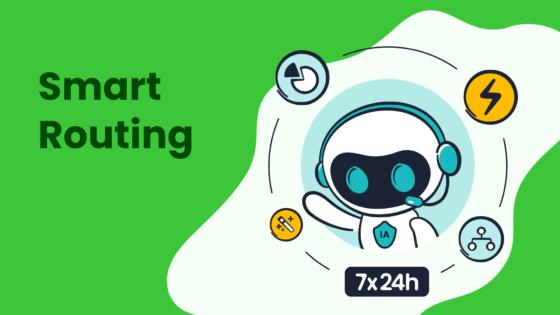
Case Study: OPPO's Success with Sobot's Solutions
OPPO, a global leader in smart devices, faced challenges in managing customer inquiries during peak shopping periods. By implementing Sobot's chatbot and ticketing system, OPPO transformed its customer service operations. The chatbot handled repetitive queries, allowing human agents to focus on complex issues. This human-machine collaboration significantly improved efficiency.
Sobot also optimized OPPO's knowledge base by automating Q&A input, reducing maintenance efforts by 90%. The integration of global customer channels and business systems eliminated data silos, enabling seamless access to customer information. These enhancements led to an 83% chatbot resolution rate and a 94% positive feedback rate. Most notably, OPPO achieved a 57% increase in repurchase rates, showcasing the power of customer analytics in driving loyalty and growth.
Example: Enhancing Customer Support with Sobot's Voice/Call Center
Sobot's Voice/Call Center exemplifies how customer analytics can elevate support services. Its intelligent IVR and AI-powered Voicebot streamline call routing, reducing wait times and improving satisfaction. For instance, a retail business using this solution saw a 15% increase in profitability within a year by optimizing customer interactions.
The platform's unified workspace consolidates customer data, enabling agents to deliver personalized support. Real-time call tracking and monitoring provide actionable insights, helping businesses refine their strategies. These features demonstrate how analytics can transform customer support into a growth driver.
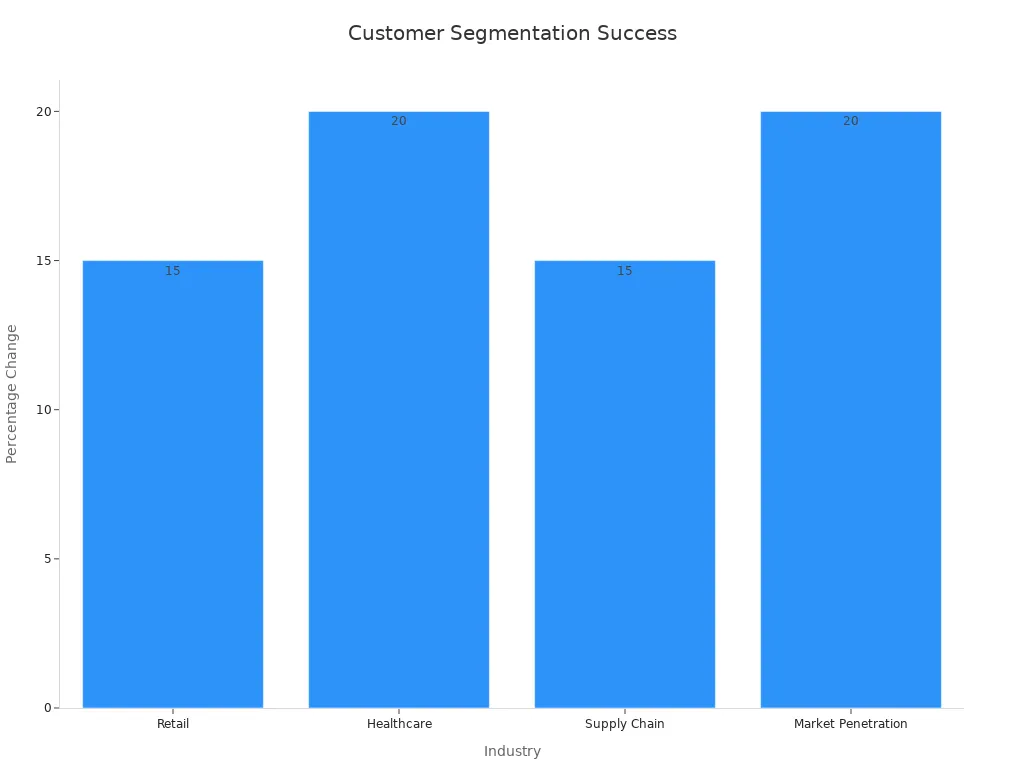
Success Story: Driving Customer Retention in SaaS Businesses
SaaS companies often struggle with customer retention due to high churn rates. By leveraging customer analytics, these businesses can identify at-risk customers and implement targeted retention strategies. For example, a SaaS provider used predictive analytics to analyze usage patterns and proactively address customer concerns. This approach reduced churn by 20% and increased customer lifetime value.
Sobot's solutions, such as its AI-powered Voicebot, play a crucial role in these efforts. By recognizing customer intent and providing intelligent interactions, the platform enhances satisfaction and loyalty. These tools highlight the importance of analytics in fostering long-term relationships with customers.
Customer segmentation and analytics transform how you deliver customer experience insights. These strategies help you understand your audience better, enabling personalized interactions that drive satisfaction and loyalty. Businesses adopting tools like Sobot's Voice/Call Center gain actionable insights, improving decision-making efficiency by up to 30% and reducing costs by 20%.
| Improvement Type | Percentage Improvement |
|---|---|
| Decision-Making Efficiency | 25-30% |
| Cost Reduction | Up to 20% |
| ROI Growth | 15-25% |
Investing in customer-focused analytics ensures long-term benefits, including higher ROI and sustainable growth. By leveraging these insights, you can create meaningful connections and elevate your customer experience.
FAQ
What is customer segmentation, and why is it important?
Customer segmentation divides your audience into smaller groups based on shared traits like demographics or behavior. It helps you understand customer needs better and deliver personalized experiences. For example, businesses using segmentation often see a 31% increase in loyalty program participation.
How can analytics improve customer experience insights?
Analytics reveals patterns in customer behavior and preferences. Predictive analytics, for instance, forecasts future trends. Tools like Sobot's Voice/Call Center provide real-time call tracking and monitoring, helping you refine strategies and enhance satisfaction.
What tools can help with customer segmentation and analytics?
Platforms like Sobot's Voice/Call Center offer features like intelligent IVR and AI-powered Voicebots. These tools simplify segmentation by analyzing customer interactions and providing actionable insights. They also improve decision-making efficiency by up to 30%.
How does Sobot's Voice/Call Center enhance customer segmentation?
Sobot's Voice/Call Center integrates customer data into a unified workspace. It uses AI-powered Voicebots to recognize intent and automate repetitive tasks. This improves segmentation accuracy and ensures personalized communication.
How do you measure the success of segmentation efforts?
Track metrics like conversion rates, customer retention, and Net Promoter Scores (NPS). For example, businesses using Sobot's analytics tools often report a 25% improvement in decision-making efficiency and higher customer satisfaction.
See Also
Best Call Center Analytics Tools to Use in 2024
Excelling at Live Chat for Retail Businesses
Shopify Live Chat: Authentic Experiences from Users
